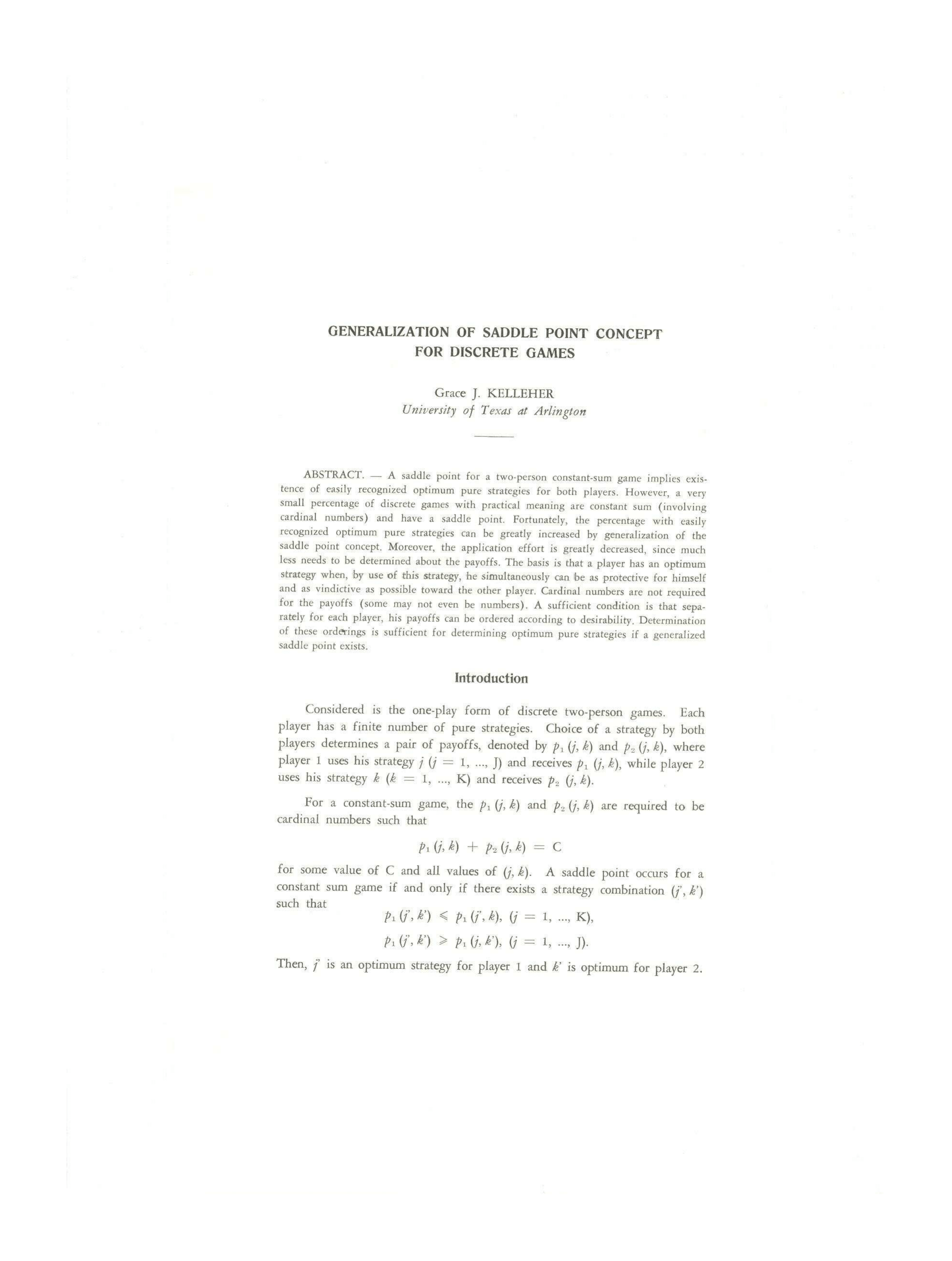Generalization of saddle point concept for discrete games
Abstract
A saddle point for a two-person constant-sum game implies existence of easily recognized optimum pure strategies for both players. However, a very small percentage of discrete games with practical meaning are constant sum (involving cardinal numbers) and have a saddle point. Fortunately, the percentage with easily recognized optimum pure strategies can be greatly increased by generalization of the saddle point concept. Moreover, the application effort is greatly decreased, since much less needs to be determined about the payoffs. The basis is that a player has an optimum strategy when, by use of this strategy, he simultaneously can be as protective for himself and as vindictive as possible toward the other plays. Cardinal numbers are not required for the payoffs (some may not even be numbers). A sufficient condition is that separately for each player, his payoffs can be ordered according to desirability. Determination of these orderings is sufficient for determining pure strategies if a generalized saddle point exists.


